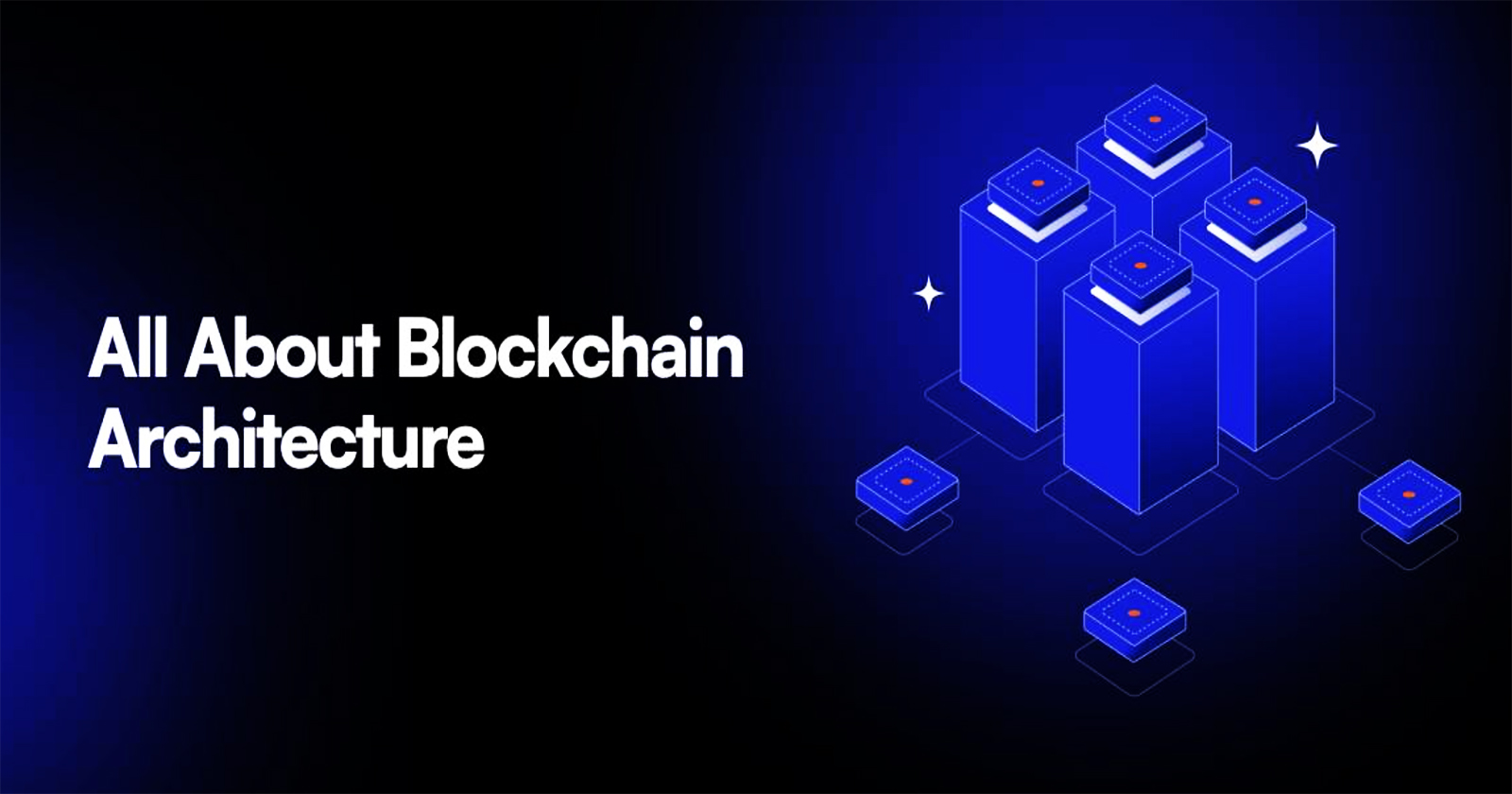Blockchain Architecture Basics: Components, Structure
 AadarshSoni
AadarshSoni
What is Blockchain Architecture?
Blockchain architecture refers to the structure and components of a blockchain network. While there can be variations depending on the specific blockchain implementation, the fundamental architecture typically includes the following key elements:
Nodes: Nodes are individual computers or devices connected to the blockchain network. Each node maintains a copy of the entire blockchain ledger and participates in the process of validating and propagating transactions.
Consensus Mechanism: The consensus mechanism is the protocol through which nodes in the network agree on the validity of transactions and the state of the blockchain. Common consensus mechanisms include Proof of Work (PoW), Proof of Stake (PoS), and Delegated Proof of Stake (DPoS).
Blocks: Transactions are grouped together into blocks, which are then added to the blockchain in a chronological order. Each block contains a cryptographic hash of the previous block, creating an immutable chain of blocks.
Transactions: Transactions represent the transfer of value or information on the blockchain. Transactions are validated by nodes in the network and added to a block for inclusion in the blockchain.
Cryptographic Hashing: Cryptographic hashing algorithms are used to secure the integrity of the blockchain. Each block contains a cryptographic hash of the previous block, creating a chain of blocks that cannot be tampered with.
Smart Contracts (optional): Smart contracts are self-executing contracts with the terms of the agreement directly written into code. They automatically execute when predefined conditions are met, providing programmable functionality to blockchain networks.
Network Protocol: The network protocol defines the rules and standards for communication between nodes in the blockchain network. It ensures that nodes can securely and efficiently transmit data and propagate transactions across the network.
Types of Blockchain Architecture Explained
All blockchain structures fall into three categories:
- Public blockchain architecture
A public blockchain architecture means that the data and access to the system is available to anyone who is willing to participate (e.g. Bitcoin, Ethereum, and Litecoin blockchain systems are public).
- Private blockchain architecture
As opposed to public blockchain architecture, the private system is controlled only by users from a specific organization or authorized users who have an invitation for participation.
- Consortium blockchain architecture
This blockchain structure can consist of a few organizations. In a consortium, procedures are set up and controlled by the preliminary assigned users.
Core Components of Blockchain Architecture: How Does It Work
These are the core blockchain architecture components:
Node - user or computer within the blockchain architecture (each has an independent copy of the whole blockchain ledger)
Transaction - smallest building block of a blockchain system (records, information, etc.) that serves as the purpose of blockchain
Block - a data structure used for keeping a set of transactions which is distributed to all nodes in the network
Chain - a sequence of blocks in a specific order
Miners - specific nodes which perform the block verification process before adding anything to the blockchain structure
Consensus (consensus protocol) - a set of rules and arrangements to carry out blockchain operations
Subscribe to my newsletter
Read articles from AadarshSoni directly inside your inbox. Subscribe to the newsletter, and don't miss out.
Written by
